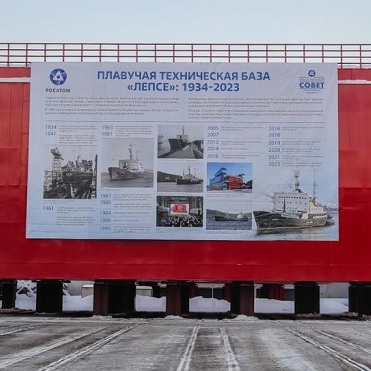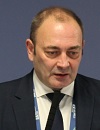 |
||
|
Witnessing Chinese nuclear collaboration in Paris CNNC, PUBLISHED 04.12.2023 "We are all witnesses of the colossal challenge of climate change. In 2022, nuclear energy represented the world's second largest source of low-carbon electricity. Over the past five decades, it has helped avoid the emission of approximately 70 billion tons of carbon dioxide." said Sylvie Bermann, President of WNE, during the 2023 WNE held in Paris from November 28th to 30th, with the theme "Connecting nuclear to the world: rising to the energy and environmental challenges". At the opening ceremony of the 2023 WNE, Rafael Grossi, Director-General of the International Atomic Energy Agency (IAEA), stated, "We see it in Asia, which by far is the leading continent or region in terms of new fields. I was in China just a few months ago to see all these important developments." The vice president of China National Nuclear Corporation (CNNC) Ma Wenjun, along with Sylvie Bermann, Rafael Grossi, Minister Chen Li and Minister Counselor Guo Xiaolin from the Chinese Embassy in France, and executives from Electricite de France, Orano, Westinghouse Electric Corporation, and other companies, visited the CNNC booth and engaged in discussions. Showcasing China's competence in nuclear power delivery At this exposition, CNNC focused on showcasing and sharing its core competence in nuclear power delivery. At the closed meeting on the challenges of nuclear energy deployment initiated by Grossi, Ma Wenjun shared the practices of CNNC in ensuring the delivery of the Hualong One with counterparts such as the Japan Atomic Industrial Forum, the UK Nuclear Industry Association, the Italian Nuclear Association, and Westinghouse Electric Corporation. Ma Wenjun also emphasized that CNNC has consistently upheld an open and collaborative approach, hoping to work together with international counterparts to accelerate the development of nuclear energy, contributing to addressing challenges such as climate change and nuclear safety. At the nuclear power delivery capability thematic presentation held by CNNC, China Nuclear Power Engineering, China Nuclear Engineering & Construction Corporation, and China National Nuclear Corporation Overseas presented CNNC's 40-year experience in nuclear power, covering aspects such as design, construction, and project management. CNNC has consistently delivered nuclear power projects on time and within budget. The seminar witnessed the participation of over 100 experts from around the world. During the roundtable forum, the expert from China Nuclear Power Engineering used the example of the Hualong One to showcase CNNC's achievements in batch construction and advanced project management. He emphasized that safety and quality are prerequisites for success. The expert from the Nuclear Power Institute of China highlighted the significant advantages of developing small modular reactors under China's "dual carbon" goal, noting their crucial role in the future energy system. He also introduced the design features, engineering progress, and application prospects of CNNC's self-developed multi-purpose modular small reactor ACP100. In the exhibition, CNNC used an electronic sand table to show a future smart city with nuclear energy. The connection between the lights and the elements such as seawater and buildings on it shows various applications of different types of reactors in fields of power generation, desalination, hydrogen production, and petrochemicals. They showcase the ubiquitous presence of nuclear energy in the future life. The types of reactors include Hualong One, Linglong One, high-temperature gas-cooled reactor, fusion reactor, and nuclear medical applications. Promoting the building of a global community with a shared future for nuclear energy development At the Sino-French Nuclear Energy Cooperation and Exchange Seminar, Ma Wenjun stated that China and France are important to the global nuclear energy industry. The collaboration and friendship between the two countries in the field of nuclear energy have a long history and serve as an exemplary model of technological cooperation. Today, two countries have the opportunity to come together to discuss various dimensions of advanced nuclear energy development, marking a concrete step taken by both countries to deepen understanding of nuclear energy cooperation and a new starting point for embracing the future of nuclear energy. During the seminar, representatives from CNNC delivered a speech on advancing nuclear technology to contribute to achieving the "dual carbon" goal. They introduced nuclear energy development and CNNC's comprehensive solution of nuclear energy utilization under the background of the "dual carbon" goal, as well as CNNC's outlook and contributions to the global nuclear energy development. Since the signing of the first agreement on the peaceful use of nuclear energy between China and France in 1982, Sino-French nuclear cooperation has become an integral part of the comprehensive strategic partnership between the two countries. As an important part of Sino-French nuclear technology collaboration, CNNC has established long-term and friendly cooperation with French partners, yielding fruitful results. On April 6th of this year, CNNC and Electricite de France signed cooperation agreements, marking the beginning of a new chapter in nuclear cooperation between CNNC and France. As the mainstay of China's nuclear industry, CNNC has actively collaborated with global partners, including France, continuously expanding high-level cooperation. CNNC has consistently prioritized safety, integrating development and safety efforts. It is committed to driving nuclear science and technology development through innovation, intensifying efforts in fundamental scientific research, key technology research, and the conversion of innovative achievements. CNNC has also promoted international exchanges and cooperation, contributing to the construction of a global community with a shared future of nuclear energy development. Concrete steps in business integration During the exhibition, CNNC held bilateral talks with EDF, Westinghouse Electric Corporation, Framatome, Cameco, and other enterprises in the Middle East and Africa and achieved multiple cooperation intentions. CNNC will also conduct a business integration meeting with Framatome, marking the first cross-sectoral business engagement between the two enterprises and serving as a new starting point for future collaboration. As the world's largest civil nuclear industry exhibition, the scale and influence of this year's WNE are historic. It has attracted 650 exhibitors and 20,000 participants from 76 countries, bringing together industry decision-makers from around the world. Seventeen major participants in the global nuclear industry from China, Canada, South Korea, Japan, the Czech Republic, the United Kingdom, the United States, and France set up pavilions at the exhibition. During the event, there will be 130 roundtable forums, keynote speeches, forums, and seminars, along with 6,000 business meetings. Topics: China Other news: IAEA has issued a technical document on global inventories of secondary uranium supplies The document provides a comprehensive assessment of publicly available information on current secondary uranium supplies, including at the regional and national levels. China makes a major breakthrough in obtaining kg-level molybdenum isotopes The remarkable achievement was made through independent research and development. WANO helps new units in a number of ways, including New Unit Assistance, Operational Readiness reviews, and Pre-startup reviews. |
Hero of the day 
In particular, to discharge spent nuclear fuel, the Lepse was placed in a specially designed and built onshore sheltering site. This made it possible to prevent any weather effects such as sea disturbance and precipitation. INTERVIEW
AtomInfo.Ru OPINION
WANO |

